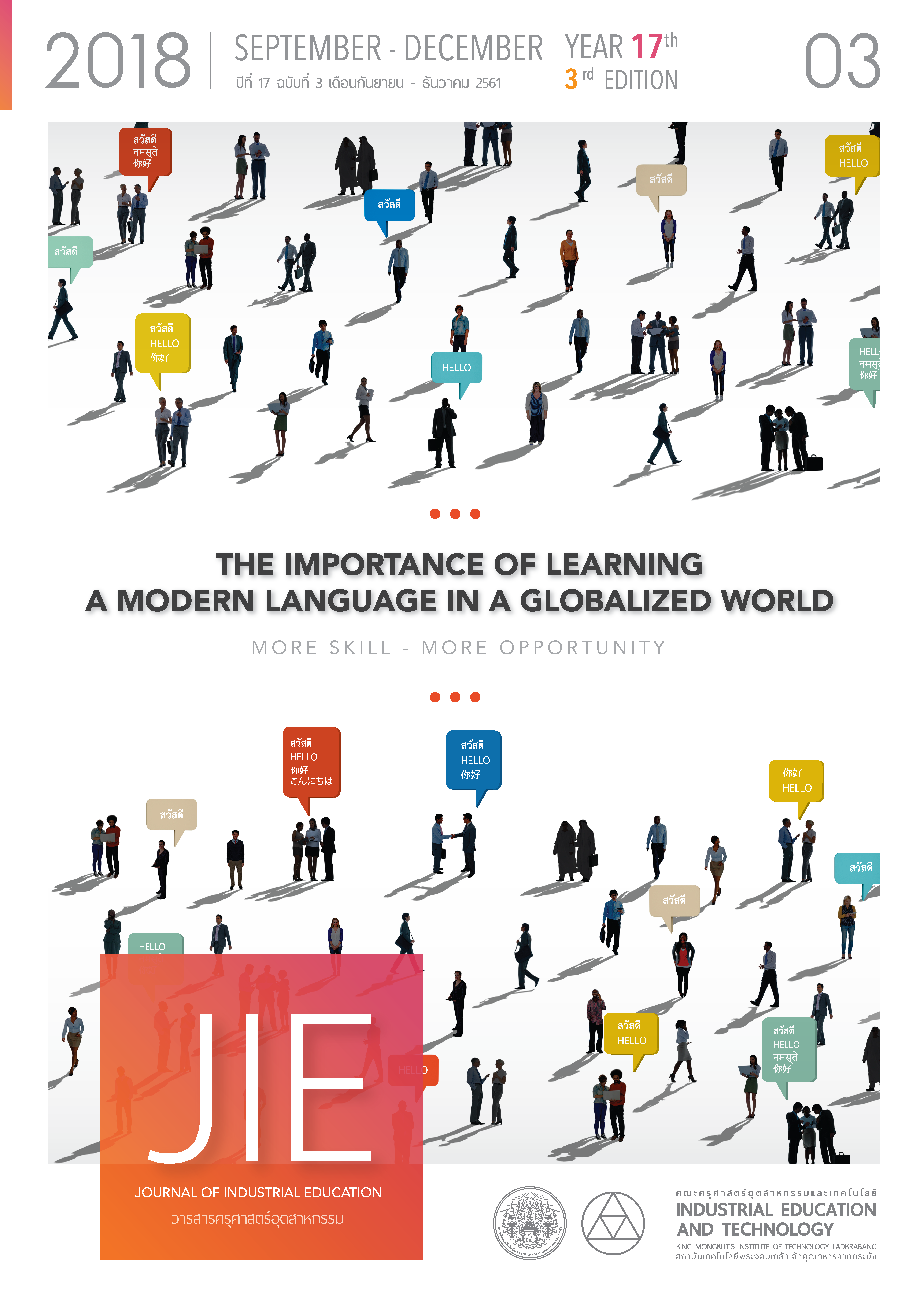การใช้สังคมออนไลน์ในการเรียนแบบผสมผสาน
Main Article Content
บทคัดย่อ
การจัดการเรียนการสอนในปัจจุบันได้มีการเปลี่ยนแปลงจากการเรียนแบบดั้งเดิมเป็นการเรียนออนไลน์ อย่างไรก็ตาม ผู้เรียนบางส่วนยังไม่พร้อมกับการเรียนแบบออนไลน์เต็มรูปแบบและยังต้องการพบกับผู้สอนในชั้นเรียนอยู่ การสอนแบบผสมผสาน (blended learning) จึงเป็นทางเลือกที่ได้รับความนิยมในปัจจุบัน ซึ่งเป็นการจัดการเรียนการสอนที่ผสมผสานมีอยู่หลากหลายแนวทาง สำหรับแนวทางที่พบมากคือ การผสมผสานทั้งการเรียนแบบพบกันในชั้นเรียน (Face to Face:F2F) กับการเรียนผ่านระบบเครือข่าย (online learning) โดยเครื่องมือที่นำมาใช้ในการเรียนผ่านระบบเครือข่ายที่สามารถจูงใจผู้เรียนให้สนใจในบทเรียนได้นั่นคือ สื่อสังคมออนไลน์ ได้แก่ เฟสบุ๊ก แอปพลิเคชันไลน์ ยูทูป เนื่องจากเป็นเทคโนโลยีที่ผู้เรียนเข้าถึงได้ง่าย และใช้เป็นประจำในชีวิตประจำวัน โดยสามารถนำมาใช้เป็นเครื่องมือในการสื่อสาร เป็นช่องทางในการส่งเนื้อหา รวมถึงใช้เป็นสื่อการสอนทั้งในห้องเรียนและการเรียนผ่านเครือข่าย
Article Details
"ข้อคิดเห็น เนื้อหา รวมทั้งการใช้ภาษาในบทความถือเป็นความรับผิดชอบของผู้เขียน"
References
[2] Owen, J. 2017. The impact of blended learning. Retrieved October 3, 2018, from https://edtechnology.co.uk/Article/the-impact-of-blended-learning
[3] Thorne, K. 2003. Blended learning: how to integrate online & traditional learning. USA: Kogan.
[4] Driscoll, M. 2002. Blended learning: Let’s get beyond the hype. Retrieved June 15, 2018, from http://www.07.ibm.com
[5] Sirirat Petsangsri. 2012. Review article Blended Learning And the application of Blended Learning and Its Applications. Journal of Industrial Education, 11 (1), p. 1-5.
[6] Allan, B. 2007. Blended learning: tools for teaching and training. London: Cromwell Press
[7] Boelens, R., De Wever, B., and Voet, M. 2017. Four key challenges to the design of blended learning: A systematic literature review. Retrieved June 24, 2018, from http://www.tecolab.ugent.be/pubs/2017_Boelens_De_Wever_Voet_EDUREV.pdf
[8] Kajonwut Maneechai, Thanongsak Sovajassatakul and Sirirat Petsangsri. 2017. A Development of Web-Based Instrcution based on Cooperative learning using jigsaw technique on universe for grade 9 students. Journal of Industrial Education, 16(2), p.40-47.
[9] Poore, M. 2013. Using Social Media in the classroom a best practice guide. London: Peplika Press.
[10] Srichao Vihogto. 2016. Meaning and Importance of Social Media. Retrieved July 15, 2561, from http://crnfe2013.blogspot.com/2013/05/11-social-media.html
[11] Sarawoot Nilsook, Lertlak Klinhom and Paitoon Pimdee. 2015. The Study of Information Technology Usage Behaviour of Undergraduate Student at Southeast Bangkok College. Journal of Industrial Education, 14(2), p.299-304.
[12] Oxford University Press. 2013. Using Facebook and Smart Devices for Blended learning. Retrieved July 20, 2018, from https://oupeltglobalblog.com/2013/10/24/using-facebook-and-smart-devices-for-blended-learning/
[13] Gulthawat Samarak, Panita Wannapiroon and Pallop Piriyasurawong. 2015. Development of Blended Leraning Model via Social Network by using Case-bsed Leraning on Video Sharing for Developing Critical Thinking Skills. Technical Education Journal King Mongkut’s University of Technology North Bangkok, 6(1), p. 205-214.
[14] Erdem, M., & Kibar, P. N. 2014. Students's opinions on Facebook upported blended learning environment. TOJET: The Turkish Online Journal of Educational Technology, 13(1), p. 199-206.
[15] Yan Chan, W., & Leung, C. 2016. The Use of Social Media for Blended Learning in Tertiary Education. Journal of Education Research, 4(4), p. 771-778.
[16] Electronic Transactions Development Agency. 2018. Report of Thailand Internet User Profile 2018. Bangkok: Electronic Transactions Development Agency.
[17] Chen, T & Chen, L. 2014. Utilizing Wikis and a LINE message App in Flipped Classrooms. EURASIA Journal of Mathematics, Science and Technology Education, 14(3), p 1063-1074.
[18] Aghaei, S; Nematbakhsh, A. M and Farsani, K. H. 2012. International Journal of Web&Semantic Technogoly [IJWestT], 3(1) p. 1-10.

